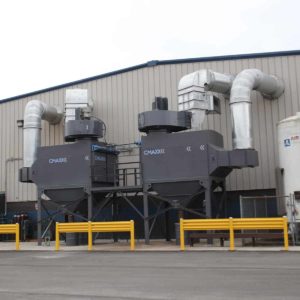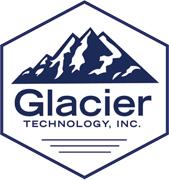 Many companies have always just exhausted their weld fume outside. This has been an option for companies especially in temperate climates where heating or cooling the manufacturing plant was not necessary. Plants in colder climates have been able to justify the expense of a cartridge collector, which saved energy costs by filtering the air and returning the conditioned air back into the workspace. Most of these systems could see a payback within 2-3 years just on the energy savings alone, not to mention a cleaner and healthier environment for the workers.
Many companies have always just exhausted their weld fume outside. This has been an option for companies especially in temperate climates where heating or cooling the manufacturing plant was not necessary. Plants in colder climates have been able to justify the expense of a cartridge collector, which saved energy costs by filtering the air and returning the conditioned air back into the workspace. Most of these systems could see a payback within 2-3 years just on the energy savings alone, not to mention a cleaner and healthier environment for the workers.
A new EPA regulation will mean that plants will no longer be able to just exhaust the contaminated air outside. The new regulation includes national emission standards for hazardous air pollutants and area source standards for nine metal fabrication and finishing source categories.
The new EPA standard was established on July 23, 2008. Any new facility built after this date had to meet the new standard. All other facilities must comply by July 25, 2011. Notification of compliance must be submitted before November 22, 2011 if it is an existing facility or if it is a new facility 120 days after start up or by November 20, 2008, whichever is later.
Metal Fabrication Hazardous Air Pollutants (MFHAP) include any manufacture that use materials that contain .1 percent of cadmium, lead, nickel or chromium and any material that contains 1% manganese are affected by this regulation. Most welding rod and wire has more than 1% magnanese so almost all welding applications fall under this regulation. Other manufacturing processes that are identified are dry abrasive blasting, machining, dry grinding and polishing, and spray painting (but not thermal spray). Anyone working with stainless steel, which usually contains over 10% chromium will also fall under these new rules.
It identifies nine types of manufacturing to be regulated. Basically, it is anyone manufacturing anything metal.
The nine types are:
- Electrical and Electronic Equipment Finishing Operations
- Fabricated Metal Products
- Fabricated Plate Work (Boiler Shops)
- Fabricated Structural Metal Manufacturing
- Heating Equipment except Electric
- Industrial Machinery and Equipment Finishing Operations
- Iron and Steel Forging
- Primary Metal Products Manufacturing
- Valves and Pipe Fittings.
It does not apply to installations owned or operated by the Armed Forces, NASA, National Nuclear Security Administration, military munitions or equipment to transport munitions. Also, anyone using less than 2,000 pounds of welding rod or wire are is also exempt.
The test methods stated in the regulation are EPA method 9 and 22 but simply put, you cannot have any visible emissions (zero opacity) from these types of manufacturing processes. Daily monitoring is required using EPA method 22. If you pass for 10 consecutive days during operation, you can then go every 5 days after 4 weeks of passing. Then you can go once every 5 days, then every once 21 days. Passing the 21 day testing 3 times allows you to go to 60 day intervals. The regulation does define a cartridge collector as an acceptable control device to eliminate visible emissions.
Method 9 requires being able to judge opacity and you must be certified every six months. Method 22 requires that you need to determine if there are any emissions and do not need to be certified. You can use method 22 on Tier 1 applications if you install a control device and have not observed any emissions. If you are recording emissions constantly (Tier 2) or have opacity over 20% (Tier 3) than you have to go to method 9. You still have to fix the problem of emissions and submit what corrective action you are taking.
If you install a control device to clean up your emissions, you can use method 22 to check for emissions every 60 days.
Contact us here at Glacier Technology.
